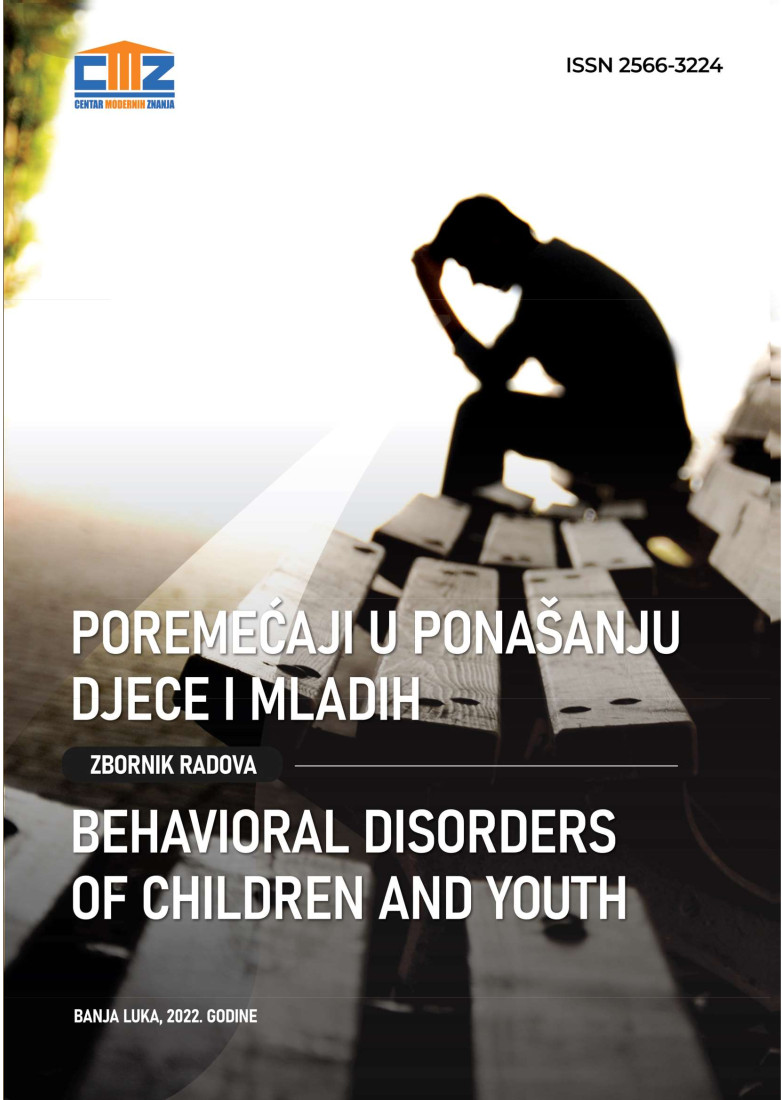RIZIČNA PONAŠANJA KOD DJECE OSNOVNOŠKOLSKE DOBI S OBZIROM NA PORODIČNU STRUKTURU I UKLJUČENOST RODITELJA U PREVENTIVNE AKTIVNOSTI
RISK BEHAVIORS IN CHILDREN OF PRIMARY SCHOOL AGE WITH REGARD TO FAMILY STRUCTURE AND THE INVOLVEMENT OF PARENTS IN PREVENTIVE ACTIVITIES
Author(s): Emina Suljkanović-Djedović, Lejla Kuralić-Čišić, Adela ČokićSubject(s): Psychology, Sociology, School education, Evaluation research, Family and social welfare, Social Norms / Social Control
Published by: CENTAR MODERNIH ZNANJA
Keywords: internalized and externalized behavioral problems; children and youth; risk;
Summary/Abstract: The aim of the work is to determine the prevalence of certain risky behaviors among children of primary school age, considering the family structure and the involvement of parents in preventive activities. The sample of respondents in this research consists of 450 elementary school students, aged 12-13, of both sexes. The research was carried out in the Municipality of Doboj Istok and Gračanica. Emergent forms of risky behavior were examined using Achenbach's integrated assessment system, version for adolescent self-assessment (ASEBA Youth Self-Report - YRS, Achenbach, 2007), while for data on the level of risk, the Modified Questionnaire for assessing the level of risk/needs (YLS/MCI) was used) by Andrews and Hoge (1994). Descriptive and inferential statistics methods were used for statistical data processing. The results show that there are clear differences in the presence of behavioral disorders in students with regard to the different family structure and parental involvement. There are significant differences between adolescents who live with both parents and whose parents are involved in preventive activities and those who come from incomplete families and whose parents are less committed. Statistically significant differences were observed on the scales Aggressive behavior (t = - 3.55; p < 0.00), Rule-breaking behavior (t = -3.99;p < 0.00) and the dimension of Externalization (t = - 2.45; p < 0.00). We also tried to examine the relationship between structurally disturbed families and internalized problems and it was observed that there are no statistically significant differences. Through the interpretation of the obtained results, it is possible to conclude that the considered student characteristics contribute significantly to the phenomenology of risky behaviors, which points to the possibility and justification of creating different interventions aimed at preventing risky behaviors of different groups of children and young people.
Journal: DRUŠTVENE DEVIJACIJE
- Issue Year: VII/2022
- Issue No: 7
- Page Range: 475-484
- Page Count: 10
- Language: Bosnian, Croatian, Serbian

